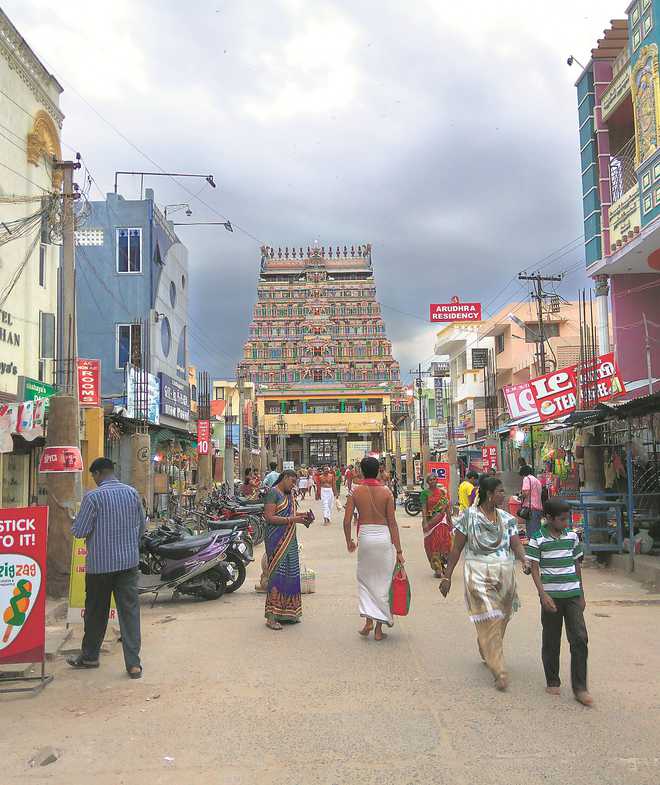
Rashmi Gopal Rao
Few towns embody the essence of South Indian culture and customs as authentically as the temple town of Chidambaram. Located in the Cuddalore district of Tamil Nadu, Chidambaram lies in the eastern part of the state, about 215 km from the capital city of Chennai. The town finds reference in ancient Sangam and Tamil literature that dates back to as early as the 7th century. History has it that it was ruled by the Pallavas till the 9th century. Later, the town came under the stronghold of the Cholas, Pandyas and the Vijayanagara Empire. While it is mainly known for its temples, the town also offers several natural sights, including rivers, backwaters and some unique mangrove forests.
Thillai Nataraja temple
The soul of the town is unarguably the Thillai Nataraja temple, spread over humongous 40 acres with nine majestic gateways. A focal point around which the town’s activities are centred, the temple is named after a species of mangrove trees (Thillai) that were believed to be found around the shrine when the temple was built. The unique feature of the temple is the fact that Lord Shiva exists in three different forms in this temple — in the the Nataraja, doing the cosmic dance, the Lingam form, and the invisible form. It is believed that Lord Shiva exists in an invisible form in the sanctum sanctorum, giving rise to a phenomenon called “Chidambara Rahasyam”, the secret of Chidambaram.
The present-day temple complex is replete with multiple tanks, pillared halls and intricately carved ‘gopurams’ — the towers dating back to the 10th century when the Cholas ruled the town. The carvings on the gopurams reflect the architectural brilliance, creativity and passion of the craftsmen of yesteryears. The carvings also include scenes of ‘Kalyanasundara’ — the wedding of Shiva and Parvati — and the 108 postures of the ‘Natya Shastra’.
The affairs and day-to-day administration of the temple, including the puja, is managed by the Podu Dikshitars, who belong to the community of Shiva Brahmans or the Ayars sect. They are elected by a system of voting, with the married male members of the community eligible to contest.
Diverse sights
Apart from the temple, Chidambaram is famous for its silk as well as the imitation jewellery industry. About 15 km from the town is Pichavaram, the second largest mangrove forest after the Sundarbans. A unique ecosystem that is also a popular tourist attraction, Pichavaram is located at the Vellar-Coleroon estuarine complex. A boat ride amidst the network of seemingly unending canals and narrow channels surrounded by diverse flora is an experience like none other.
Chidambaram is also located close to colonial towns like Puducherry and Tranquebar (now called Tharangambadi), which are 65 and 50 km, respectively, from the temple town. While the former was an erstwhile French colony, a visit to the latter is sure to give you a taste of Denmark for it was a Danish colony, established in the 17th century.
Temple architecture
The Gopurams
The temple has nine gateways and four of these have towering pagodas or gopurams, each with seven levels in the east, south, west and north. The eastern pagoda has all 108 postures (karnams) of the Indian dance form - Bharatanatyam -- sculpted on it.
Significance of the temple design
The layout and architecture of the temple is replete with philosophical meanings. The nine gateways signify the nine orifices in the human body
Five Sabhais or diases or halls:
The Chit sabhai, which is the sanctum sanctorum housing Lord Nataraja, his consort Goddess Shivagamasundari
The Kanaka sabhai - in front of the Chitsabhai, from which the daily rituals are conducted
The Nrithya sabhai: To the south of the temple’s flag mast, where the Lord is said to have danced with Goddess Kali
The Raja sabhai: A 1000-pillared hall, which symbolises the yogic chakra of thousand pillared lotus or Sahasraram
The Deva sabhai: It houses the Pancha moorthis, namely Lord Ganesh, Lord Somaskanda, the Lord’s consort Sivananda Nayaki, the Lord Muruga and the deity of Chandikeswarar — Courtesy: www.chidambaramnatara.org



























